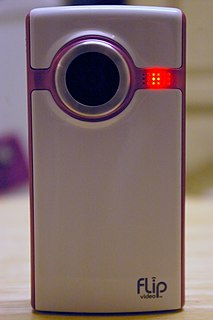 W
WBody worn video (BWV), also known as body cameras and body-worn cameras, or wearable cameras is a wearable audio, video, or photographic recording system.
 W
WA portable DVD player is a mobile, battery powered DVD player in the format of a mobile device. Many recent players play files from USB flash drives and SD cards.
 W
WA liquid contact indicator (LCI) is a small indicator that turns from white into another color, typically red, after contact with water. Those indicators are small stickers that are placed on several points within electronic devices like laptops and smartphones. In case of a defective device, service personnel can check whether the device might have suffered from contact with water. After contact with water, or other liquids, the device is not covered by warranty. Liquid contact indicators are also known by other names such as water damage tape, water damage sticker, water contact indicator tape, liquid submersion indicator.
 W
WThe MTV-1 Micro TV was the second model of a near pocket-sized television. The first was the Panasonic IC model TR-001 introduced in 1970. The MTV-1 was developed by Clive Sinclair. It was shown to the public at trade shows in London and Chicago in January, 1977, and released for sale in 1978. Development spanned 10 years and included a cash infusion of GB£1.6 million from the UK government in 1976.
 W
WNixie is a small camera-equipped drone that can be worn as a wrist band. Nixie can be activated to unfold into a quadcopter, fly in one of its pre-programmed modes to take photos or a video, and then return to the user. Competing against more than 500 other participants, Nixie's developers became the winning team in the development track of the Intel's Make It Wearable competition on November 3, 2014, thus securing $500,000 in seed funding to develop Nixie into a product. The developers stated their goal to develop the drone into the next generation of point-and-shoot cameras.
 W
WA pocket video camera is a tapeless camcorder that is small enough to be carried in one's pocket.
 W
WIn policing equipment, a body camera or wearable camera, also known as body worn video (BWV) or body-worn camera (BWC), is a wearable audio, video, or photographic recording system used to record events in which law enforcement officers are involved. They are typically worn on the torso of the body on the officer's uniform. Body worn cameras for policing are often similar to other body worn video equipment used by civilians, firefighters, or the military, but are designed to address specific requirements related to law enforcement.
 W
WAmateur radio operators take part in portable operations using radio equipment when traveling. "Portable" equipment indicates a configuration that allows for relatively rapid collection, transportation, and deployment of amateur radio gear. A portable station can be anything from a small QRP radio and antenna, to a large transceiver. On long-distance expeditions, such equipment allows them to report progress, arrivals and sometimes exchanging safety messages along the way.
 W
WThe Sony Watchman is a line of portable pocket televisions trademarked and produced by Sony. The line was introduced in 1982 and discontinued in 2000.